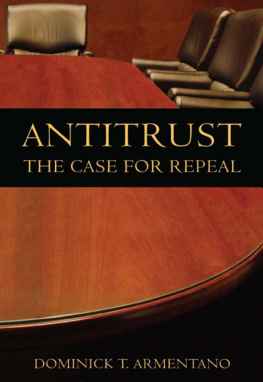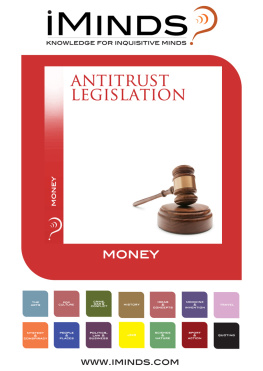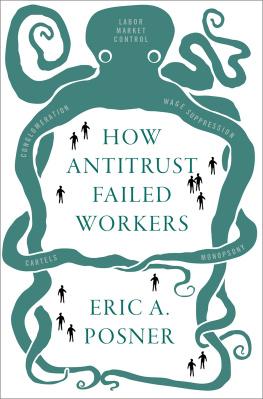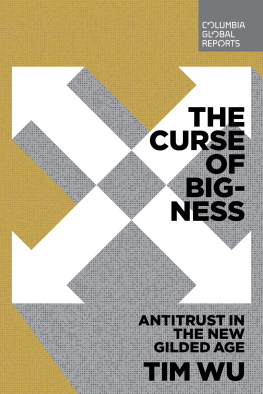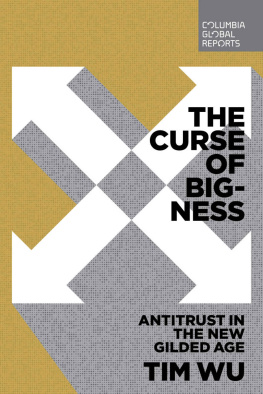ANTITRUST
THE CASE FOR REPEAL
DOMINICK T. ARMENTANO
REVISED 2ND EDITION


All rights reserved. Written permission must be secured from the publisher to use or reproduce any part of this book, except for brief quotations in critical reviews or articles.
The publisher has attempted throughout this book to distinguish proprietary trademarks from descriptive terms by following the capitalization styles used by the manufacturers.
First edition, titled Antitrust Policy: The Case for Repeal, originally published by the Cato Institute, 1000 Massachusetts Avenue, Washington, D.C. 2001.
Copyright 1999 by the Ludwig von Mises Institute
Reprinted in 2007 by the Ludwig von Mises Institute
Ludwig von Mises Institute, 518 West Magnolia Avenue,
Auburn, Ala. 36832; www.mises.org
ISBN: 978-0-945466-25-3
Contents
People of the same trade seldom meet together, even for merriment and diversion, but the conversation ends in a conspiracy against the public, or in some contrivance to raise prices. It is impossible, indeed, to prevent such meetings, by any law which either could be executed, or would be consistent with liberty and justice. But though the law cannot hinder people of the same trade from sometimes assembling together, it ought to do nothing to facilitate such assemblies; much less render them necessary.
Adam Smith
The Wealth of Nations
Preface
The flurry of federal and state antitrust activity against firms such as Toys R Us, Staples, Intel, and Microsoft may signal the beginning of an unfortunate new era in enforcement. Antitrust regulation, like a relentless Terminator, is back in business and the economic havoc it threatens is considerable.
My position on antitrust has never been ambiguous: All of the antitrust laws and all of the enforcement agency authority should be summarily repealed. The antitrust apparatus cannot be reformed; it must be abolished.
It is said that much is risked in calling for repeal. Any call for repeal is likely to galvanize those interests committed to a return to the old-style, traditional enforcement policies. In addition, the antitrust establishmentattorneys, consultants, antitrust agency bureaucratswould probably step up its attack on those who intend, from its perspective, to further weaken antitrust policy. Abolitionists would again be portrayed as pro-business and anti-consumer, devoid of any concern for consumer welfare or economic fairness. The most serious danger, presumably, would be that a principled opposition to all antitrust could delay important antitrust reforms or even reverse some of the slight administrative reforms already achieved.
Similarly, any serious movement to repeal is said to run the risk of alienating the support of those critics of traditional policy most responsible for the modest antitrust reforms that we have seen to date. The majority of important antitrust critics do not support the repeal of antitrust laws; in their view, there is an appropriate role for antitrust policy in a free-market economy, although one that is reduced in scope from the traditional understanding. They would argue that antitrust is still necessary for combating cartels, very large horizontal mergers, and bona fide predatory practices.
I emphatically disagree. There certainly are risks in working for repeal, but there are even greater risks in not pushing the intellectual argument against antitrust to its logical conclusion. I will argue that the case against antitrust regulationany antitrust regulationis far stronger than even its most important critics are willing to acknowledge. I will argue that the employment of antitrust, even against private horizontal agreements, cannot be justified by any respectable general theory or empirical evidence. But even more practically, I will argue that the very modest administrative reforms that we have seen can only be temporary. They were, after all, only administrative reforms, and we have already fallen back into the quagmire of more traditional enforcement policies. The greater risk would be to remain content with some modest reform agenda while leaving the entire antitrust institutional structure of private litigation, agency enforcement, and court review essentially in place. It would be far better in an entirely practical sense to abolish all of these institutional arrangements and simply be done with the greater risk.
Many of the arguments I develop and cases I discuss in this book will be familiar to readers of my Antitrust and Monopoly.of Antitrust: The Case for Repeal, to reach a wider audience and to promote a greater public understanding of the case against antitrust regulation. Such an understanding still appears necessary.
__________________
Dominick T. Armentano, Antitrust and Monopoly: Anatomy of a Policy Failure, 2nd ed. (Oakland, Calif.: Independent Institute, 1990).
Robert H. Bork, The Antitrust Paradox: A Policy at War with Itself (New York: Basic Books, 1978); Yale Brozen, Concentration, Mergers, and Public Policy (New York: Macmillan, 1982); Fred L. Smith, Jr., Why Not Abolish Antitrust? Regulation 7 (January/February 1983): 2328; Frank H. Easterbrook, The Limits of Antitrust, Texas Law Review 63 (August 1984): 140; Fred S. McChesney, Laws Honor Lost: The Plight of Antitrust, Antitrust Bulletin 31 (1986): 35982; William Shughart II, The Organization of Industry (Homewood, III.: Richard D. Irwin, 1990); and Fred S. McChesney and William F. Shughart II, The Causes and Consequences of Antitrust (Chicago: University of Chicago Press, 1995).
Introduction: An Antitrust Overview
Although it is difficult to summarize more than a century of antitrust enforcement in one observation, it is undeniably true that the antitrust laws have often been employed against innovative business organizations that have expanded output and lowered prices. That is most obvious in private antitrust cases (90 percent of all antitrust litigation), but it is also evident in the classic government cases as well. Since antitrust regulation (at least the Sherman Act) was allegedly designed to prohibit business activity harmful to consumers interests, much of antitrust policy as practiced, appears terribly misguided and might be termed a paradox.
The alleged paradox can be explained in several ways. One approach is to challenge the public interest origins of antitrust policy.
For example, when a firm lowers its price, is that competition or an attempt to monopolize? When a firm gains market share, is that evidence of efficiency or a threat to competition? When business mergers are restricted by law, is competition enhanced or restrained? When a firm engages in expensive research and innovation that competitors cannot easily duplicate, is that monopolization? Faulty theorizing on these issues could explain a public policy attack on economic efficiency in the name of preserving competition.
Economic Theory and Antitrust Policy
The theoretical foundations of antitrust policy developed generally from neoclassical microeconomics and were refined by scholars specializing in industrial organization. And although industrial organization (IO) theory remained deeply rooted in pure competition and pure monopoly models, IO economists in the late 1940s and 1950s increasingly focused their analyses on those industries that lay between pure competition and absolute monopoly. Their goal: to understand the relationships between market structure, business behavior, and overall economic performance.

